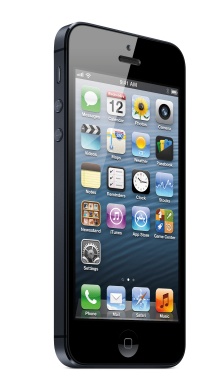Fitch Ratings (www.fitchratings.com) — a global rating agency “dedicated to providing value beyond the rating through independent and prospective credit opinions, research and data” — believes that while the new device will likely create some short-term margin pressure for U.S. wireless carriers, it could likely lead to greater revenues in the long term.
To be sure, 3Q 2011 EBITDA [earnings before interest, taxes, depreciation and amortization] margins for major carriers AT&T and Verizon were 39.9% and 40.6%, respectively. Following introduction of the iPhone 4S in 4Q11, margins declined to 24.7% and 35.0%. While those declines are notable, in 2Q12, both AT&T’s and Verizon’s margins hit their highest points since 2010, before the smartphone subsidies began taking their toll.
“We believe higher margins puts both companies in good position to weather some near-term pressure,” says Fitch Ratings. “However, some carriers may feel additional pressure. Sprint Nextel margins were below 20% in 3Q11 and fell to 8.4% in 4Q11, during which time the company began offering iPhones. T-Mobile doesn’t yet sell the iPhone but could enter the market next year after upgrading their network.”
The gadget’s new “bells and whistles” are likely to drive demand, though just how much is uncertain. While demand is expected to remain strong, carrier upgrade eligibility requirements have become tougher and that could slow down the upgrade pace. Operators have lengthened upgrade cycles and implemented early upgrade fees in an effort to mitigate subsidy costs.
For example, if a subscriber is eager to purchase the new iPhone and not yet entitled to an upgrade (the majority of contracts are two years), they will now have to pay a fee, according to Fitch Ratings. Revenue generated via those fees will likely take some pressure off margins.
“We believe carriers that have spent billions upgrading their networks are in favor of device upgrades that would ultimately cut operating costs,” says Fitch Ratings. “The new iPhone 5 will utilize a Long-Term Evolution (LTE) network, which is more efficient and drives a lower cost per bit versus the previous 3G network. Consequently, we believe the iPhone 5 will help stimulate take-up, driving more overall demand for LTE devices. Verizon has been the leader in deploying LTE, underscored by its offering to subscribers of limited time promotions. Verizon continues to aggressively move subscribers onto its LTE network, as illustrated by its 10.9 million LTE devices on the network.”
In addition, the iPhone should drive benefits from the lower churn, increased data usage. As they have in the past, carriers continue to make it easier for subscribers to upgrade their devices by discounting the purchase price of the new phone.
Carriers that offer shared plans will now heavily rely on increased consumption fees as compensation, says Fitch Ratings. To be sure, LTE devices will encourage people to surf the internet more frequently, download more video, and access social media at faster speed. For example, the iPhone 5 allows FaceTime video calling over the LTE. That application had previously been restricted to Wi-Fi only for iPhone users.
“We believe this is just one of the features that will drive increased data usage and ultimately lead to greater revenues,” says Fitch Ratings. “Sprint faces greater challenges here, as it continues to offer unlimited data packages.”


